Surprisingly little info out there regarding python and the pyalluvial package. I'm hoping to combine stacked bars and a corresponding alluvial in the same figure.
Using below, I have three unique groups, which is outlined in Group. I want to display the proportion of each Group for each unique Point. I have the data formatted this way as I need three separate stacked bar charts for each Point.
So overall (Ove) highlight the overall proportion taken from all three Points. Group 1 makes up 70%, Group 2 makes up 20%, Group 3 makes up 10%. But the proportion of each group changes at different intervals Points. I'm hoping to show this like a standard stacked bar chart, but add the alluvial over the top.
import pandas as pd
import pyalluvial.alluvial as alluvial
df = pd.DataFrame({
'Group': [1, 2, 3],
'Ove': [0.7, 0.2, 0.1],
'Point 1': [0.8, 0.1, 0.1],
'Point 2': [0.6, 0.2, 0.2],
'Point 3': [0.7, 0.3, 0.0],
})
ax = alluvial.plot(
df = df,
xaxis_names = ['Group','Point 1','Point 2', 'Point 3'],
y_name = 'Ove',
alluvium = 'Group',
)
Output shows the overall group proportion (1st bar) being correct. But the following stacked bars with the proportions.
If I transform the df and put the Points as a single column, then I don't get 3 separate bars.

